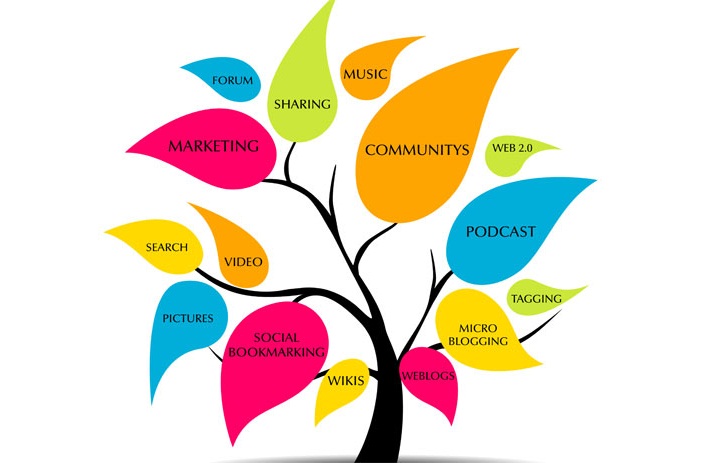 If you are not hosting a blog on your website start one. If you are not posting relevant information and blogs to draw in potential customers do it.
If you are not hosting a blog on your website start one. If you are not posting relevant information and blogs to draw in potential customers do it.
Â
Bring the traffic to you and become a destination resort for updates and information so you can reap the benefits and attention that this personal form of content marketing is commanding.
Blogging is like having your own newsreel that provides a direct channel of communication between you and your potential customers.
Â
When you communicate with and encourage people to get to know you as well as your business (A name and a face they can related to), your relationship with them becomes more personal and makes you more credible.
Since starting the blog on my Company website traffic has shot up over 2800 percent per month and people are spending time there. Also on our Facebook Page for our Foundation, Funlicoma Foundation, by just finding and posting interesting articles on different subjects draws hundreds of readers per week.
This astounding increase led me to do some research on how blogs ranked in terms of overall Content Marketing.
I found that Studies show that over two thirds of consumers will spend the time to read content on a subject they’re interested in. And blogs and articles that contain images get 94% more views.
Â
Blog content is one of the benchmarks by which success in Social Media is tracked. Blogging can also improve your search ranking. Based on a Wishpond Infographic put out this year, companies that blog have 434% more indexed pages and see 55% more traffic to their sites.
Â
Blogging is a main component of content marketing and provides many benefits– including increased traffic and visibility and SEO optimization. A company blog is also an effective form of inbound marketing.
Â
Blogging is highly beneficial when it comes to improving your social presence. In fact, according to Wishbone, interesting content is one of the top three reasons consumers follow brands on social media.
Â
Blogging is cost effective with time being the only real cost. Make your Social presence today and become a part of this social phenomenon mainstream and become a Social Media Destination Resort and you will have customers coming to you.
Written by Bill Cosgrove
DealerNet Services
 So how smart is it for small businesses to invest in giveaways especially when their profits are already wafer thin and they’re struggling with their marketing strategies? The answer is of course yes! Giveaways are a worthwhile investment and go a long way in not only building better relationships with your existing customers but also comes in handy in making new clients.
So how smart is it for small businesses to invest in giveaways especially when their profits are already wafer thin and they’re struggling with their marketing strategies? The answer is of course yes! Giveaways are a worthwhile investment and go a long way in not only building better relationships with your existing customers but also comes in handy in making new clients.Almost all small businesses are heavily dependent on their returning customers which constitute their 80% sales. Following are some of the reasons which make free giveaways a worthwhile investment for small businesses.
Customer retention
Customer retention is of utmost importance for wholesale suppliers since their business largely depends on a few big clients. In an industry where clients are hard to come by, wholesale traders must do whatever it takes to retain their existing customers since, as mentioned earlier, they are their primary source of revenue. Giveaways go a long way in showing just how much you value your special customers. Customers too in return feel the obligation of staying committed in their dealings with you and do not look for other suppliers.
Building better relationships
There is no better way of building trust and developing stronger relationships with your customers than via free giveaways. They are the best possible way to appreciate your valued clients and show them just how much they mean to you. Giving presents as such is a good practice and should be a norm because it literally spells out just how much the customer means to the company.
Free marketing
Before you give anything away, you should make sure that all of your giveaways bear the logo of your company. Giveaways with company logos and trademarks offer long lasting, cheap marketing for both your business and your product as well.
If, as an example, you have given away a paperweight to your client, you can be sure that it would do more than just weigh papers down! A desk, office accessory that your client puts on his office table is there for everybody he meets, greets in his office. So in that sense, you are not only reaching out to your client only but also to those who are your client is reaching out to.
Because of these and many other reasons, I believe this season every small business must invest in free giveaways.
Written by Robert.
DealerNet Services
Social Media: The Most Economical Yet effective Marketing Tool
Tags: We all know that social media is huge today. People just can’t live without sharing what they feel or displaying what they wear. It’s all sociology from one perspective but it can also mean marketing to a few from another perspective. It is a common fact that where there is sugar there will be the bees. Similarly whenever there are huge concentrations of people, the marketer and advertisers are always there to make use of such situations and struggling to sell products or gain a good brand reputation.
We all know that social media is huge today. People just can’t live without sharing what they feel or displaying what they wear. It’s all sociology from one perspective but it can also mean marketing to a few from another perspective. It is a common fact that where there is sugar there will be the bees. Similarly whenever there are huge concentrations of people, the marketer and advertisers are always there to make use of such situations and struggling to sell products or gain a good brand reputation.Customer retention is by far the most effective way through which a business may gain prosperity and customer retention could only be possible when the people are repeatedly reminded of a brand or a shop or by simply infusing in them a desire to feel the need of anything which the company might be selling. With the advent of social media or to be more precise, when the social networking became the life of the people around the globe, viewership at a specific portal started increasing. Since all that a good TV channel needs is ratings to attract advertisers, here at social networking websites all was already set. People are frequently logging in and out of websites like Facebook, uploading pictures to get comments and statuses to tell their friends what they are going through.
The high concentration of people gathering around the social networking websites provides the traders with the cheapest form of marketing possible. The best part is that the add is displayed on various places and even if the user ignores the advertisement the people around the user may notice the availability of a new item at a some celebrated store and might hasten to buy it before someone else from the community buys. The desire to stand unique among the rest is experienced by everyone and it is this very desire which the traders may cash even when they are trading for wholesale products.
It is an open secret that nearly everyone uses Facebook, Twitter, LinkedIn, Instagram etc. these days. People even prefer to buy cell phones supporting applications which may lead them straight and in as less time as possible to their cyber wall where they post all their statuses or tweets or whatever they want to post. So naturally potential customers are always there looking for ways and means to get a better bargain in the market, searching for some better way to defeat that big competitor who usually gets all the customers due to his high quality yet economical products. Here is where the wholesale traders can actually seal a good deal and earn major profits if only they can post their advertisement, which is always facilitated by such websites.
Social media has by far, revolutionized marketing in every way imaginable. Advertising in now cheaper, effective and result oriented and many businesses are gaining the upper hand in the markets just by a little but careful investment on the social media. What people need to do is to concentrate on social media for advertising their products as compared to getting involved in other expensive, less effective means of advertising.
Written by Robert.
DealerNet Services
What Is Google Plus And Why Should I Join Another Social Platform?
Tags: In the web industry, we need to spend a lot of time researching and keeping up with the constant change in order to provide relevant and sound advice to our customers.
In the web industry, we need to spend a lot of time researching and keeping up with the constant change in order to provide relevant and sound advice to our customers.Our customers are typically small to medium businesses who often don’t have the time to engage on any social media, but one of the questions I’m being increasingly asked is what is Google Plus?
We’ve all seen the gradual change within Google towards better quality content being a key search factor, along with the growing influence of social media on search, but to put it bluntly, Google Plus has the potential to permanently change the search landscape.
If you and your business aren't actively engaged on Google Plus, you are placing your business at risk!
A study by SearchMetrics earlier this year (you will need to register to download thestudy) showed that social signals such as “Likes†etc correlated very closely to search rankings, and that Google +1s more so than Facebook and Twitter. Correlation isn’t necessarily causation, but recent comments by Matt Cutts and a Google blogannouncing “in depth†articles show that Google Plus participation is going to be vital to gain and maintain rankings.
So, what is Google Plus and how do I use it?
If I had to summarise my thoughts on Google Plus, it would be that I came for the SEO benefits, but stayed for the huge amount of valuable and relevant of information that is shared, the standard of discussion and the willingness of most members to help out and contribute.
Google Plus is different to other social media, in my experience it is less prone to bad behaviour, and experienced members give freely of their time. Discussion topics can we wide ranging, I've been caught up in discussions on music, poetry, westies (as in dogs, via one of the very many "communities"), as well as my core interests of web design, digital marketing and social media.
While I’ve had a Google Plus profile for quite some time I’ve only been actively engaging for the last few months. So instead of me trying to explain it all, I’ll link to some excellent articles by Martin Shirvington, an outstanding authority on Google Plus amongst many other things and someone who will engage with you and help you make the most of this platform. (Make sure your first connection on G+ is Martin)
“If you think Google Plus is just another social site, you are in for a big surprise. What has been created is, put simply, a phenomenal tool for human communication, and much more. But it takes you to experience it, embrace it and ‘get it’ before this realisation really comes.â€- Martin ShirvingtonÂ
Martin Shervington
Marketing, Psychology & Google+ InsightsWhat is Google Plus? A Complete User Guide. (Videos and Blog)
Article resources (including additional videos)
- The Ultimate Guide to Google Plus Posts
- The Ultimate Guide to Google Circles
- The Ultimate Guide to Google Hangouts
- Complete Guide to Google Plus Pages for Brands and Businesses
- Complete Guide to Google Plus Communities
- Complete Guide to Google Local
- How to use Google Plus with Google Adwords
- Complete Guide to your YouTube Channel
- Google Authorship and Social SEO
- Search Engine Optimization (SEO), using Google Plus
BY CHRIS SUTTON
DealerNet Services
 Every once in a while I stop for a moment and consider just how radically different marketing is today from what it was just three years ago. Looking no further than my desk, I am quite amazed at how my job has changed in just that short time.
Every once in a while I stop for a moment and consider just how radically different marketing is today from what it was just three years ago. Looking no further than my desk, I am quite amazed at how my job has changed in just that short time.Previously, marketing seemed more an art than a science. It stood in contrast to IT, finance, and operations -- the enterprise functions that lived in a more structured and quantifiable reality than marketing.
Back then, the concept of strategic alignment across organizational lines usually seemed limited to the domain of those in the C-suite. They still focus on it to be sure, but now strategic alignment is also a concern of marketing.
Traditionally, the consumer packaged-goods industry was the leading on in which management engaged marketing in enterprise-wide alignment. It's not surprising considering the nature of the CPG business, and that focus on alignment became known as brand management. As Phil Kotlerattests in this short video, good brand management rests squarely on the shoulders of strategic alignment. The idea is not simply to communicate a brand promise, but to also fulfill that promise with well orchestrated execution and delivery.
What has changed? Now the world is increasingly lived online. The advent of social media has also tipped the scales of business communications decidedly in favor of the consumer. Therefore, customer-centricity is not merely a concern for soap makers and cereal purveyors -- it's essential for all businesses. As a result, brand-management approaches that depend on internal alignment are key to marketing success across industries. Alignment increasingly entails marketing and IT, given the online nature of our digital world.
More than ever, great marketing is about spot-on execution that delivers what's promised.
It follows then that it is not only important to align across departments, but also to align withinthe marketing department through marketing-operations management. It's no longer optional -- marketing-operations management is critical to planning and executing marketing that grows your business. When you can integrate marketing-operations management with marketing automation, adaptive customer-experience management, social media analytics and marketing optimization, then you have your hands on all the major levers that engage your market and grow your business in ways that are structured and quantifiably effective.
Marketing operations management enables success, because you’ll achieve greater consistency, efficiency, and effectiveness by automating and integrating marketing processes and workflows. Key components of this process include marketing-strategy development and planning, asset creation, campaign execution, and post-campaign analysis and reporting.
With the right approach to marketing-operations management, you can plan and develop marketing programs and workflows based on corporate initiatives, and then deliver confidently at a tactical level with consistent messaging, collateral, and execution methods. If you add budgetary views to that operating model, you achieve fiscal control while enabling collaborative planning, allocation, and program execution.
In a nutshell, that's how marketing-operations management supports strategic alignment. For more details, you might be interested in downloading this whitepaper, "Integrating Marketing Operations: How Marketers Can Align Their Strategy and Planning with Overarching Corporate Goals."
Written By John Balla
DealerNet Services
The Importance Of Influencing Pre-Market Consumers On Social Marketing
Tags: 63 percent of car buyers have an initial brand in mind before they begin researching their purchase. (Source: Google/think)
63 percent of car buyers have an initial brand in mind before they begin researching their purchase. (Source: Google/think)Why should you care about this stat that has to do with a category in which you likely do not compete?
Great question.
You should care because what this demonstrates – check that, proves – is that consumers’ brand preference and purchase intent is being influenced in the pre-market stage of their purchase path. That is, they are making critical decisions that will influence their purchases even before they are thinking about making a purchase.
Powerful stuff.
So, what does this have to do with social media and content marketing?
Another great question.
Well, this has a lot to do with it actually. Social media and content marketing affords us the opportunity to forge relationships with consumers at every stage of the purchase cycle – pre-market, in-market and post-market.
By finding ways to develop relationships with consumers before they are thinking about making a purchase – in the pre-market phase – we can influence brand preference, land our businesses within consumers’ initial consideration set, and dramatically increase the chances of making a sale to consumers when they are ready to make a purchase, or when they are in-market.
How can you do this?
That’s right, probably the best question yet.
There are actually a number of ways that you can do this, and a number of things to bear in mind when doing so.
Here are a few thoughts for how you can develop relationships with pre-market consumers that work toward influencing their purchase decision in your favour:
Provide value that is contextually relevant
I write about the importance of providing true value to your audience on social media a fair bit, but it is absolutely imperative when we’re talking about influencing pre-market consumers. The value and relevance of your content is what is going to attract them to your brand even before they’re thinking about making a purchase. Depending on your strategy it can also build credibility, establish trust, sway perceptions, and more.
When developing your content strategy for connecting with pre-market consumers, the content they view as being valuable may be different that what in-market or post-market consumers see as being valuable. They aren’t yet invested in your business or brand, and they might not even be thinking about your category at this point! This can dramatically affect the content you should consider producing, though it should always retain relevance to your value proposition.
Don’t pitch them
This is pretty simple, but don’t bother pitching to pre-market consumers. Don’t try to sell to them. They’re not shopping, so you shouldn’t be selling. Just think about how annoying it is when a salesperson approaches you and is pushy when you’re just browsing, or accompanying a friend with their purchase.
Avoid turning pre-market consumers off of your business or brand by laying off the pitch until your consumers have indicated they’re ready for it.
Invest, be patient and be confident
What I’m talking about here is no flash in a pan solution to selling like crazy on social media. This is an approach that will take time, and the value of which will be more apparent in the long run.
Invest in connecting with pre-market consumers today so that you can sell them not tomorrow, but six months from now, or a year or two from now.
This approach will yield returns, but they won’t be the immediately apparent returns of cutting prices, or holding a BOGO event. Be patient and confident in your strategy and you’ll see the benefits in due course.
_
This approach of targeting pre-market consumers is not intended to work for every business. If consumers in your business’ category go through a short purchase cycle, or purchases are made by impulse, then there may not even be such thing as traditional pre-market consumers in your category.
However, if purchase cycles are sufficiently long, and the financial payoff of converting social media activity to a sale is high, then I strongly recommend you start thinking about your social media and content marketing activity to pre-marketing consumers as an amortizing investment.
How do you target pre-market consumers? How do you get people interested in your business even if they’re not looking to make a purchase? Have you had any success attracting people to your brand even if they’re not considering making a purchase?
Written By Matthew Peneycad
DealeNet Services

It should be noted that while Facebook took ownership of Instagram, Vine is owned by Twitter. As you might expect this makes Vine and Instagram virtual proxies for their respective corporate parents. This has turned into a tit-for-tat between the two, with one unveiling a new feature followed closely by the other. Shortly after Facebook introduced video for Instagram, Twitter announced it had redesigned the camera tools, channels for sharing and the ability to re-Vine other posts.Â
Instagram was originally designed to host photos, and only recently added the video features. Vine, on the other hand, was designed to take, edit and host six second videos. This has contributed to slightly different types of users for each app. Vine, which was adopted by eager new users, tends to be a little more creative and unorthodox, while Instagram users are more likely to be more human-oriented and heartfelt. Vine also seems to attract users who are more enthusiastic about the challenges and rewards of the medium, while Instagram may be more tailored to casual users.Â
Instagram marketing is probably the area to devote the lion’s share of your interest because it has almost 130 million active users, while Vine reports only 13 million users. With the added power of Facebook behind it, Instagram marketing is more likely to skyrocket in popularity, while Vine has tapered off. This is not a death sentence for Vine, but it does hinder their heretofore unobstructed ascendancy.Â
Instagram has some other benefits like the ability to filter clips and delete them, while Vine requires scrapping the entire video and redoing it. Instagram also allows clips which are 15 seconds long, however, added length is not necessarily a clear advantage. Twitter and Vine have performed a variety of studies indicating the 6.5 seconds is optimal for most users. Â
Utilizing Vine or Instagram marketing is not as simple as shooting a promotional video. Like their parent social media cultures, users are not usually amenable to marketing messages which direct them to a retail site. You will need to produce creative, humorous or intriguing videos that compel users to discover more about your organization. The ability to rapidly produce and easily share these short videos should stoke your enthusiasm for these apps. A truly engaging clip can rapidly inundate the blogosphere and generate huge buzz about a product or organization.Â
Both Instagram and Vine can be portals for finding and connecting with new consumers. With the right advice and expertise, your next Vine or Instagram marketing video can open the floodgates to whole new markets.Â
Posted by Drew Palmer
DealeNet Services
 Words are hooks, words are levers There's a debate raging in my town over whether or not to replace the existing planted-grass school football field with what used to be known as Astroturf. One side has already won a crucial victory: the local paper calls the new alternative, "turf."
Words are hooks, words are levers There's a debate raging in my town over whether or not to replace the existing planted-grass school football field with what used to be known as Astroturf. One side has already won a crucial victory: the local paper calls the new alternative, "turf."Turf is what we call a racetrack, or half a fancy dinner (surf and...). Turf is short and punchy and feels organic. If they had called it 'plastic' or 'fake grass' or 'artificial turf', every conversation would feel different before we even started.
What to call the new diamonds that are being manufactured in labs, not dug out of the ground under horrible conditions? Some want them to be called 'artificial diamonds' or not diamonds at all. Others might prefer 'flawless' diamonds (because they are) or 'perfect'.
Is it a 'course', a 'group' or a 'club'? It might be all three, but the word you choose will change the anchor and thus the leverage that word has going forward. Are you a 'consultant', an 'advisor' or a 'coach'?
Engineers and doctors and other scientists seem to think they're skipping all of this when they use precise, specific language. But the obvious specificity and the desire to scare off untrained laypeople is in itself a form of leverage.
For politicians and others that want to re-invent the language for their own ends--you can work to plant your hook anywhere you choose, but if you torture the meaning and spin, spin, spin, you risk being seen as a manipulator, and all your leverage disappears. If your hook finds no purchase, you have no leverage.
On the other hand, the great brands (Pepsi, Kodak, etc.) planted words that meant nothing and built expensive fortresses around their words, words that now have emotional power.
The only reason words have meaning is because we agree on what they mean. And that meaning comes from associating those words with other words, words that often have emotional anchors for us. This isn't merely the spin of political consultants. It goes right to the heart of how we (and our ideas) are judged.
Written By Seth Godin
DealerNet Services
 Unless your organization watches its Facebook stats carefully, you may not have realized Facebook has become increasingly less accommodating to brands and companies over the course of the platform’s recent updates. Some notable business owners, like billionaire Dallas Maverick’s owner Mark Cuban, have even spoken out against Facebook’s latest changes.
Unless your organization watches its Facebook stats carefully, you may not have realized Facebook has become increasingly less accommodating to brands and companies over the course of the platform’s recent updates. Some notable business owners, like billionaire Dallas Maverick’s owner Mark Cuban, have even spoken out against Facebook’s latest changes.
For example, in late 2012 TechCrunch noticed that posts made by brand pages were only being displayed to a tiny fraction of a page’s following, and were being hidden from the rest. Facebook has been restricting how many of a page’s followers see a given post, a statistic known as “Reach,†for several years now. However TechCrunch found that in late 2012 Facebook made changes to the newsfeed that caused the reach for brands to drop as much as 40% compared to what it was earlier in the year.
Posts for the average Facebook brand page are now being seen by less than 10% of their audience! For example, if you spent time, money and effort to build your Facebook following to 4,000 people, that means now each post you make is going to be seen by less than 400 of them.
Facebook has a solution for this though…you can pay them money and then they will show your post to more people. That doesn’t quite seem ethical though, does it? First you spend money to build your following on Facebook, and then you spend even more money to reach the following you worked so hard to build?
It’s no wonder so many business owners, like Cuban, are upset and considering leaving the platform. So, is it time for you to close your Facebook page? Here are three important things to consider:
1. Does your business model allow for recurring purchases?  There is a rule in marketing and sales that says it’s always cheaper to sell more to an existing customer than it is to find a new customer. If your business allows for customers to make repeat purchases, like an online store or clothing company with new items every season, then the chances are better that your company will get value from a Facebook page. However, if your customers only need to buy your product once, like a video game or a book, then you will always have to be finding new customers because your product doesn’t lend itself to repeat purchases. That will make it harder for you to come out with a positive return on your Facebook investment if you are continually having to find new customers instead of simply re-selling old ones.
2. Do you have other contact information for your Facebook followers? Depending on your company’s approach to Facebook, you may know that most of the people on your Facebook page got there because they were already following your company on its website, email list, or elsewhere. If that’s the case, there shouldn’t be much negative consequence to closing your Facebook page, because you can still reach those customers another way. However this situation is probably rare, so what can you do if you don’t have other ways to contact your existing Facebook fans?
Start by going to your page and looking at the cost for promoted posts. Figure out how much money you’d wind up spending to reach your desired number of fans each month. This will let you know how much money you can potentially save by moving people to another platform like Twitter, Tumblr, or an email list.
From there, come up with a budget for a contest, and an ad campaign to promote it to your Facebook following, that encourages people to switch to your new platform of choice. This will allow you to justify the expense of the contest and the promotional campaign because you can show that after a certain amount of time, say six months, you will have saved enough money in Facebook expenses to pay for the contest. And every month after that those savings will be contributing to higher profits for your company.
3. How are you measuring the value of your Facebook fans? This is the most important question to ask yourself about whether or not you should keep your Facebook page. Do you know the average revenue generated per fan? Or how many new fans you need to acquire in order for one to make a purchase? Unless you have some way of proving that having a Facebook page is making your company money, you’re running the risk of wasting a substantial amount of time and resources. It’s time for you to start making sure your Facebook page is creating a positive return on investment.
For example, if you know that for every 10 new fans you acquire on average one makes a $20 purchase, then you can look at how much it costs in advertising and administrative costs in order to get 10 new fans. It’s important to factor in the labor and admin costs because those are resources that could be doing something else potentially more effective at generating money for your business if they weren’t tied up running the Facebook page.
So, if it costs you less than $20 to acquire 10 new fans on Facebook, then it’s worth it to keep your page and pay money to grow your following. However, even if you’ve determined that your page is generating positive ROI now, that doesn’t mean that it will continue to do so. Especially if your business doesn’t allow for repeat customers, like the first question pointed out, make sure that you check in on your Facebook ROI regularly.
First, there’s no guarantee that Facebook won’t make changes in the future that will further reduce your ROI. You may also find that as you sell more of your product it will become harder to sustain the same volume of sales. You may reach a point where all of the people who are most likely to buy from you have already done so, and the only people left to target aren’t as interested. This would cause your sales to drop and require you to look at a new strategy to address the changed marketplace.
The bottom line is if you’re going to have a Facebook page, make sure you’ve got a justification for it. And “I’m doing it because all my competitors are doing it†doesn’t count. Just because they like to waste money doesn’t mean you should.
By Alon Popilskis
DealerNet ServicesThe Often Forgotten Ingredient For Measuring Content Marketing
Tags:
 Content marketing is now a way of life for B2B businesses. It’s one of the primary ways B2B marketers generate and nurture leads, establish thought leadership, build their brands, expand their social following, and engage with and retain customers.
Content marketing is now a way of life for B2B businesses. It’s one of the primary ways B2B marketers generate and nurture leads, establish thought leadership, build their brands, expand their social following, and engage with and retain customers.
If you’re a B2B marketer, this probably isn’t news. We’ve been reading and hearing about the importance of content marketing for years. But it was still good to see the importance of content marketing confirmed in a recent 2013 study by the Content Marketing Institute, which found that 33% of B2B marketing budgets are now allocated to content marketing, which is up from 26% in 2011.
Content marketing has certainly arrived. But with increased budget comes increased scrutiny from executives and higher-ups. And getting management to buy in to the importance of content marketing – and the necessity of increasing their investment in it – can be a challenge. It’s now no longer good enough to create engaging content, you have to be able to prove its ROI, and that requires the right data and tools.
Proving content marketing needs data
Good marketing teams are able to show how their content is having a positive impact on the following.
- Web traffic
- SEO
- Social media followers
- Newsletter email lists
- Blog subscribers
- Email open and click-through rates
- Video views
Measuring that data is a good start, but while those numbers are useful in understanding the types of content and topics your audience enjoys, they aren’t going to impress most executives.
Better marketing teams can show how their content is having a direct impact on lead generation. Being able to demonstrate that this eBook or webinar generated X amount of leads usually gets an exec’s attention, but this usually isn’t enough to convince them that your content marketing budget is worth increasing (or, in some cases, justifiable as it already is).
Show me the money
That’s why the best marketing teams are the ones that can prove how those leads from content marketing are impacting revenue. For CEOs, revenue is everything.
They need to see the money.
It’s the key figure that will get them not only to buy in to the value of content marketing, but also to approve an increase in your budget.
Three essential analytics tools
Being able to prove how content marketing is impacting revenue requires three analytics tools. The first two are a marketing automation tool and a CRM system.
1. Marketing automation
Marketing automation tools like Marketo, Eloqua, or Pardot enable you to capture leads from web forms and to tie those leads to the marketing source that referred them. This means that you can create reports on how many leads each of your eBooks, white papers, webinars, and other content generated, as well as the email, web page, social media post, blog, video, PPC ad, SEO term, or other source the lead used to find you.
2. CRM systems
What’s more, when you integrate your marketing automation tools with a CRM system like Salesforce.com or SugarCRM, you can track each of those web leads through the sales cycle. And that means being able to prove to execs that your content marketing has generated X amount of web leads, Y amount of opportunities, and Z amount of revenue.
So what tool is often missing?
The often forgotten analytics tool
The data available from a marketing automation tool integrated with a CRM system can be very powerful, but if that’s all you are using to defend your content marketing, you aren’t doing it justice.
That’s because all you are measuring are the opportunities and revenue from web leads. You aren’t capturing the inbound phone calls your content is also generating, and this is problematic for two big reasons:
- You might not be getting credit for a ton of content marketing leads. If someone reads a blog and calls sales, for example, or calls after watching a video, reading collateral from a trade show, or getting a nurturing email, you can’t prove it.
- Inbound phone calls are often from leads who are ready to engage with a sales manager, and therefore more likely to become revenue than a web lead. Phone calls are the leads you most need to track back to your content.
That’s why the third analytics tool every B2B marketing team should use is a call tracking tool. Call tracking tools enable you to include unique trackable phone numbers in your downloadable and printed content, videos, trade show presentations, emails, ads, and direct mail blasts to measure the calls they generate. Even if a lead visits your web site before calling you, call tracking tools can still tell you how that caller found your site and the web page or blog posts they called from.
Integration is key
And like marketing automation tools, you can integrate call tracking tools with your CRM system to follow each phone lead through to revenue. By using all three analytics tools together, you can share detailed, accurate reports on the impact your content is having on the business’s bottom line. It’s an extremely compelling defense of content marketing that CEOs can understand. Plus you have the more granular data marketing teams can use to understand what content is working and what isn’t in order to make improvements.
Guest Author: Blair Symes from Ifbyphone. To learn more about call tracking and improving your content marketing ROI, you can download the white paper, “Tracking Phone Leads: The Missing Piece of Marketing Automation.â€
Â
Learn how to  create contagious content
My book – “Blogging the Smart Way – How to Create and Market a Killer Blog with Social Mediaâ€Â shows you how.
It is now available to download. I show you how to create and build a blog that rocks and grow tribes, fans and followers on social networks such as Twitter and Facebook. It also includes dozens of tips to create contagious content that begs to be shared and tempts people to link to your website and blog.
I also reveal the tactics I used to grow my Twitter followers to over 170,000.
Read more about it here where you can download and read it .
Written by Blair Symes
DealerNet Services
CALENDAR
CATEGORIES
TAGS
TWITTER POSTS
CALENDAR
- powered by
- One Big Broadcast
- creative by
- WebStager
© 2025 One Big Broadcast | All rights reserved
